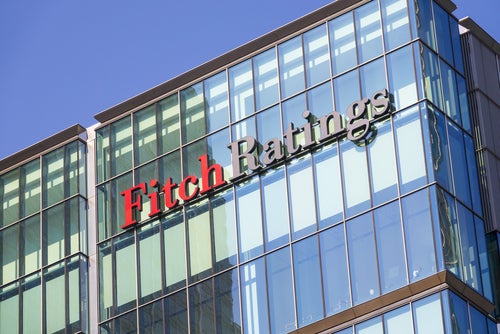relationships spanning the whole of the CEE, equivalent country
arrangements are showing some signs of success. John
Grimmett examines this issue in the context of commercial
vehicles in Poland and Hungary.

Many of the lessors in Poland and Hungary are owned by
international banks, and over the last decade they have built
portfolios that are heavily weighted towards cars and trucks.
Vehicles represented over 78 per cent of the lease portfolio of one
leading international lessor in Central and Eastern Europe (CEE) at
the end of 2004, and trucks alone still account for 35 per cent of
its new business across the region.
Vehicle manufacturers would like to establish CEE-wide
relationships with lessors, but nobody is delivering exactly what
they need. As a result, vendor leasing agreements tend to be made
at country level, possibly under the umbrella of a general
co-operation agreement at regional level. This might have something
to do with the fact that bank-owned lessors are often country –
rather than business line – oriented, and thus are unwilling, or
unable, to give sufficient power to business lines operating across
borders.
At the same time, commercial vehicles are of overwhelming
importance to leasing companies and competition has driven down
margins to the point that profits are hard to come by.
According to Dieter Philipp, director of business development at
MAN Finance International, the best solution for them would be to
find a global partner, which would imply cost savings and more
effective business development. The finance partner must be able to
direct local operations from the centre, although this is not
generally attainable in his experience.
How well do you really know your competitors?
Access the most comprehensive Company Profiles on the market, powered by GlobalData. Save hours of research. Gain competitive edge.

Thank you!
Your download email will arrive shortly
Not ready to buy yet? Download a free sample
We are confident about the unique quality of our Company Profiles. However, we want you to make the most beneficial decision for your business, so we offer a free sample that you can download by submitting the below form
By GlobalDataThere has arguably been an over-capacity in the Hungarian truck
leasing segment in recent years and leasing margins are
particularly competitive – 150-300 basis points is regarded as
normal – so that it is very hard for a lessor to be profitable.
Poland is less difficult for lessors – a prime lessee can get 200
basis points but a medium one can pay up to 450 basis points.
A salient difference between Poland and Hungary is that Poland
is a big market and of interest to manufacturers entering with
captives. The Hungarian market is too small for this. This means
that either way, below the level of agreements with the big
manufacturers, the sales efforts of lessors are directed to local
distributors – that is, the smaller ones in Poland and all of them
in Hungary. Manuela Pachoinig, who is responsible for CEE sales at
UniCredit Global Leasing, says that, for UniCredit Leasing, direct
sales are still more important than vendor finance, although vendor
has developed fast and now accounts for onethird of new
business.
Pachoinig says that car leasing is slowing in both countries but
commercial vehicle sales are still growing. Among the sales drivers
are the poor roads that wear out vehicles relatively quickly,
the continuing need to replace long-obsolete vehicles, and the need
to be internationally competitive and to use the latest technology.
She also notes a changing attitude on the part of users to owning
their vehicles, saying that ownership was important to users early
on in the post-communist transition, but that operating leasing is
beginning to take off. Hungary is moving faster than Poland in this
direction. One motivation is that users want to switch their
vehicles more often than in the past.
Dieter Scheidl, managing director of Raiffeisen Leasing
International, notes however that the general economic slowdown in
Hungary is feeding through to the commercial vehicle sector, and he
foresees a consolidation of the truck sector and the disappearance
of many smaller operators.
RVs
As a result of the move towards operating leasing, the issue of
residual values (RVs) has become more important. The pressure is on
to raise residuals but they are still about 20 per cent lower than
in Western Europe, a difference that is justified by market
conditions – for instance, the relative difficulty of repossession
from a defaulting lessee. Lessors foresee problems if RVs rise
further.
Lessors differ in their willingness to assume RV risk. Pachoinig
says that UniCredit Leasing often does offer fixed RVs, imposing
maximum mileages on vehicles and penalties for excesses. Its
general strategy is then to resell in less developed markets such
as Bulgaria. Whether or not UniCredit Leasing offers fixed RV
depends on its infrastructure in a given market; it does this in
Hungary but not in Poland. On the other hand, suppliers have
a growing interest in remarketing and will therefore support RVs.
Philipp confirms this, saying that MAN Finance will provide RV
support to its preferred finance partners, although one problem is
that accounting rules then prevent it booking the sale of a truck
as a ‘true sale’.
Development of asset management capacity is a high priority for
many lessors and this is seen as a significant opportunity to boost
earnings. UniCredit and Raiffeisen are both developing their asset
management capability, but Raiffeisen seems to be slightly more
conservative than UniCredit about taking RV risk.
MAN Finance is probably representative of manufacturer attitudes
to setting up captive finance companies. Philipp describes its
typical sequence of development in a particular country is as
follows: first, set up a representative office and start working
with local finance providers; acquire operating experience; then,
if and when unit sales volumes grow to a certain level, establish a
captive. For MAN the critical sales volume is 2,500-3,000 units
annually. The captive will provide dealers with floor plan and
stock finance, body building and customisation finance and end-user
finance. Currently, captives in CEE are financed from the centre,
but as they and their local capital markets grow it is to be
expected that they will issue asset-based securities.
For example, MAN’s Polish office was opened in October 2007 and
the Polish operation is a captive. A representative office in
Hungary will start up next month. Poland is showing good volumes
(currently around 5,000 units) and is growing. Hungary is stable at
about 1,000 units with no growth.
According to Pachoinig, dealer-funded special offers are common,
but local regulators are showing interest in this and often regard
cut-price finance as deceptive and not in customers’ interest. This
attitude is not confined to the retail segment.
MAN Finance’s approach to selecting a preferred finance partner
is as follows:
1. Ideally, seek a global or regional partner.
2. But truck financing is personal and most or all lessors have
differing capabilities according to the country.
3. So one is forced to operate country-by-country.
4. Choose a shortlist – including lessors proposed by the local
importer and some from among MAN’s global relationships – say five
or six candidates in all.
5. Obtain competitive proposals.
6. Select a short list of two finance providers.
7. Select a senior and junior partner – that is, preferred
finance provider and a reserve. Local co-operation includes white
labelling, using the MAN Finance brand.
This approach is echoed by that of the lessors. For instance,
UniCredit says that it aims to set up co-operation agreements with
the big international vendors at global level, but also to target
local dealers. The local sales force and its contacts are thus very
important for determining sales levels. Schiedl at Raiffeisen says
the same: it is happy to have non-exclusive co-operation
arrangements with major vendors but does not seek exclusivity as
Raiffeisen does not want to be put under pressure to provide
finance to all users.
Agreements
Many lessors commented that global agreements break down in
smaller markets since the manufacturer cannot control an
independent importer. In a smaller market, such as Hungary, the
importer may have its own preferred finance partners, based on
particular criteria, including personal relationship. Knowing this,
some non-preferred lessors hire well-connected truck salesmen who
can move from company to company, taking their client relationships
with them.
Truck finance is seen as personal – a strong sales person with
good personal contacts can earn a lot of money. A Hungarian leasing
company owned by a large Hungarian bank found that it could not
penetrate the market without hiring already proven producers from
existing leading players, and it would not pay the going rate.

With the credit market problems all lessors are raising their
pricing, but there are no shifts in market share discernable for
now. Some of the more aggressive regional players – such as Hypo
Alpe Adria Leasing – seem to be pulling in their horns but nobody
seems to be willing to admit that they are experiencing funding
constraints. Scheidl notes a “flight to quality” in terms of
raising funds in the interbank market and regards this as helpful
to Raiffeisen compared to some other players. Nobody is immune, of
course, to the general rise in interbank interest rates and all
lessors try to pass the higher costs onto their lessees.
Credit underwriting is not seen as a problem area. Pachoinig
says that UniCredit Leasing has experienced people in Hungary and
Poland as well as well-developed scoring systems and asset-based
lending rules, and has had few defaults. Scheidl says that
Raiffeisen has a low delinquency rate and is happy with the quality
of its portfolio, while noting that the Hungarian economy is
struggling and its problems are being transmitted to the transport
sector and to some companies in it.
Revenue
All lessors state that revenue enhancement through insurance
sales is key, and many lessors have their own brokerages. One
lessor quoted 70 per cent penetration in Poland.
This article is light on statistics, which is because reliable
information is hard to obtain. The information published by the
leasing associations is reliant on the quality of data provided by
each lessor, which is variable.
Just like other transition economies in CEE, Poland and Hungary
saw leasing develop initially in the car and truck market segments,
which can now be regarded as fairly mature.
The first Hungarian car leasing company became active in the
mid-1990s. At this time there were generally two types of lessor:
the ‘development-led’ ones that co-operated with international
institutions such as the International Finance Corporation, an arm
of the World Bank, which tended to focus on production and
processing equipment; and the bank-owned ones that concentrated on
segments, which were the most attractive from a risk management
point of view.
The rapidly evolving markets of Central Europe were both dynamic
and risky; the service sector grew quickly and generated strong
demand for vehicles. The bank-owned approach won out and a look at
the portfolios of most such leasing companies as late as 2004 would
have shown an overwhelming preponderance of vehicle deals.
Taking a quick look at the economies of Poland and Hungary we
can see where they are similar and where they differ (see above
table).
Although Hungary has a GDP per capita that is two-thirds of the
EU average, and is clearly above that of Poland, it is Poland that
is showing the economic growth, and the size of its economy
dictates different approaches by companies marketing goods and
services. The growth outlook for Hungary in 2008 continues to be
weak – probably under 2 per cent.
Poland has pursued economic liberalisation since 1990 and today
stands out as a success story among transition economies. In 2007,
GDP grew an estimated 6.5 per cent, based on rising private
consumption, a jump in corporate investment and EU funds inflows.
Its GDP per capita is still well below the EU average, however.
Hungary has made the transition to a market economy and has
reached a per capita income of nearly two-thirds that of the EU-25
average. The private sector accounts for more than 80 per cent of
GDP. In 2007, Hungary eliminated a trade deficit that had persisted
for several years. Currently, though, its economy is struggling and
held back by a large government budget deficit.








